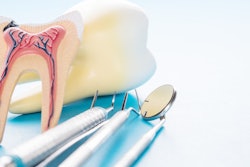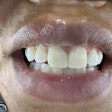
When creating an aesthetic smile, it's critical to keep in mind that 2D and 3D symmetry of natural incisors are rare, highlighting the importance of authenticity over flawlessness. The study was published in the Journal of Esthetic and Restorative Dentistry.
The findings not only raise challenges about the efficacy of some smile design software programs that are based on symmetry, as well as digital mock-ups that are based on 3D shapes for teeth, but they showcase the importance of collaboration among dentists, patients, and technicians when they are restoring smile aesthetics, the authors wrote.
"To achieve a natural and aesthetic smile rehabilitation, the symmetry of the maxillary incisors must be well understood,” wrote the authors, led by Dr. Cournault Bérangère of the University of Strasbourg in France (J Esthet Restor Dent, August 5, 2024).
Furthermore, significant asymmetry is often found at the transitional lines of contralateral teeth. These findings should be integrated into future computer-assisted 3D smile designs, the authors wrote.
To better understand smile design, 59 adults ages 19 to 26 were included in the study. For 2D analysis, measurements on maxillary casts were made using a digital caliper. For 3D analysis, the casts were scanned with a lab scanner to evaluate the labial surface symmetry of the contralateral incisors.
Quantitative data, including maximal positive and negative differences between contralateral incisors, mean deviations, and standard deviations, were analyzed using XLStat software. The data distribution was assessed with a Shapiro-Wilk test. Mann-Whitney tests were applied to non-Gaussian data, while student t-tests were used for Gaussian, or normally distributed, data, they wrote.
Identical lengths were uncommon among contralateral central and lateral incisors, with identical width measurements being even rarer. Differences in length exceeding 0.2 mm were found in 68% of central incisors and 73% of lateral incisors. Central incisors exhibited more uniformity in width, with 61% showing differences under 0.2 mm compared to 47% of lateral incisors.
Following the 3D analysis, teeth with a high degree of symmetry showed noticeable divergence primarily along the incisal edges. Teeth with significant anatomical variations exhibited divergent areas mainly at transitional line angles, according to the results.
The study had limitations. While the results reflect the objective size of maxillary incisors, they do not account for perceived asymmetry, such as the visual impact of an incisor with a small torque appearing smaller in a smile, the authors wrote.
"Natural teeth exhibit inherent asymmetry, emphasizing the importance of authenticity over perfection," they concluded.




















